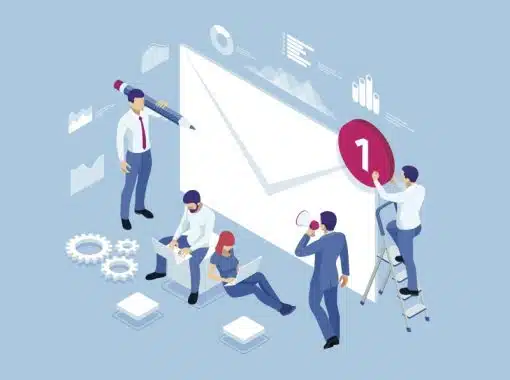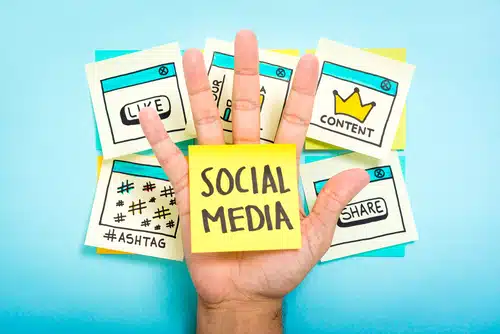
Email and text often rise to the top of the list for many strategists when it comes to direct marketing techniques. While both are effective in their own right, using them together can create a more comprehensive marketing strategy that maximizes your impact on your target market. Read on to learn the strengths of emailing and texting for business and how they can be used together.
Why Texting Is an Effective Marketing Tool
A text message carries sms marketing power because each text is a direct message to a single member of your target audience — and through one of the most intimate mediums available: their phone or device. One of the prime objectives of any form of advertising is to get the customer’s eyes and/or ears tuned to your message. For this to happen, they have to see or hear it, and this is where text messaging excels as a marketing tool.
People open texts on their phones almost as a reflex. After all, many of the most important communications they get will come through text notifications, including messages from family, friends, coworkers, supervisors, and others crucial to their day-to-day lives. It’s no surprise then that text message open rates are so high.
For example, a recent study revealed that text messages used for marketing have a 98% open rate. Granted, this doesn’t mean that 98% of people took action after reading the text, but they got their eyes on the company’s message and have opt-in, which is crucial.
How to Maximize Your Text Message Marketing
To get the most out of text marketing campaigns, you can try the following:
- Put the most compelling aspect of your sms campaign, such as a sale, deal, or new product feature, within the first few words of the message. This way, it may pop up within the text preview on the customer’s device.
- Personalize your messages with the customer’s first name, if possible. Using the name their friends use may be more likely to grab their attention than “Ms.So-and-So.”
- Keep your messages brief and to the point.
- Include a call-to-action to move them further down the marketing funnel.
Why Email Works as a Marketing Tool
Email marketing campaigns, similar to texting, also benefits from its personalized nature. As a marketer, you’re sending a message to someone through a secure, private channel, the same one they use to communicate with people and organizations that play a central role in their lives.
The email open rate is also relatively high, sitting at around 21%. While this is significantly less than that of texting, having around one-fifth of people get eyes on your message is a step in the right direction.
The key is to optimize your email campaigns how you use that time to generate more conversions, and this can be done by:
- Personalizing each email. You don’t have to limit your personalization to using your customer’s name. You can also send messages regarding purchases they recently made or significant dates, such as the anniversary of when they first interacted with your business or its content.
- Using short subject lines. If your subject line is brief, the bulk of your message can pop up in the email preview, so you will want to keep it to between six and 10 words.
- Put important info in your subject line. For example, “Hot Sale Today!” may not provide enough information, but “25% Off Purchases Made This Weekend” may result in a higher open rate, primarily because it’s more specific.
The Best of Both Worlds: Combining Email and Text Marketing
Combining sms and email marketing, you can better cater your marketing to your customer experience. You can also optimize your impact by strategically using one medium or the other, depending on the situation. Here are some ways to combine email and text message marketing.
Choose Your Channel Based on the Kind of Communication
It’s best to take a step back and realize that, like all relationships, a business relationship requires different kinds of communication and marketing channels, and some call for texting while others work better through email. Your objective should be to use one or the other at the right time — basing your decision on what you want to say.
For example, you can begin the interaction with your customer by inviting them to text you via a business phone number or WhatsApp account, for instance. This can be done by simply including your text number in your marketing collateral, on your website, or packaging. Even though this seems like a broad, open invitation, in reality, you’re encouraging a relatively limited variety of communications, such as:
- Questions about products and customer support issues
- Questions with simple answers, such as whether you’re open on holidays or during inclement weather
- Comments about products or services
- Questions about prices, sales, and promotions
You can also use text messages to reach out to customers about things that may be more time-sensitive, including:
- Bills that are due
- Receipts of bills that have been paid
- Sales and promotions that are coming up
- Adjustments to your opening hours
At the same time, you can use email for other kinds of communication, including:
- Invitations to conferences
- Information about upcoming webinars
- Newsletters
- Additions to your blog content
- Announcements of new partnerships with other vendors, government agencies, or service providers
Build Relationships with Email, but Secure Commitment with Text Messages
Using email to form the foundation of a relationship and text messaging to affirm commitment means you, essentially, allocate each medium to a different place in the marketing funnel. The strategy driving this technique is based on the presumption that emails are less personal than text messages, so communication via text leverages the more intimate nature of that medium. This makes it ideal for securing a genuine commitment. Here’s an example of how you can use email and texting to construct a “foundation/building” marketing dichotomy:
Suppose you run a real estate company that focuses on single-family and multi-family residential properties. You’ve decided to organize a webinar aimed at educating investors regarding how to purchase multi-family properties and then ways to boost their profits after the ink has dried. Here’s how you can use email and texting in tandem to help seal the deal:
- Email: Information about the webinar, including:
- Topic
- When the webinar takes place
- How long it will take
- Basic information about the format and content, such as questions, surveys, and videos
- Who the presenters will be and their qualifications
- Any free giveaways for attending, such as an eBook
- Text: After someone has signed up to attend, you can text them to:
- Confirm they’re attending
- Say, “We still have some space to include more information. Is there anything you’d like us to cover?”
- Ask a simple question, such as, “At the end, we’re going to showcase some properties. We have a lot to choose from. Are there any kinds you’d like us to include?”
Your objective with the text message follow-up is to get them to commit — either explicitly or implicitly — to a genuinely high-quality interaction. By soliciting their ideas and opinions, you involve them in the decision-making process, which enhances their sense of engagement.
Use Text Messages to Alert Customers About Important Upcoming Emails
The high open rate of text messages can also be leveraged to gain more traction on your email marketing, especially because telling a customer about an upcoming email can be done with relatively few words. The key is to avoid overusing this technique because that may irritate your recipients. To get the text-tease to email combination right, it’s best to keep a few things in mind:
- Only text about very important emails, such as significant announcements regarding the future of your business, mergers, acquisitions, location changes, or adding new branches.
- Regardless of how frequently your company has major developments, only send these kinds of text messages every month or so. Spacing them out adds underscores the import of the email you’re sending.
- Mix it up from time to time by sending a text alerting customers to an email that has the potential to significantly benefit them or their business. These may include major sales or promotions, additions to investment portfolios, dividend disbursements, and the like.
Use Text Messages for Quick Responses and Emails When Time’s Not a Factor
With this technique, you, in effect, train your customer to expect time-sensitive communications via text and non-time-sensitive interactions over email. The goal is to build an expectation that the two of you will communicate via both channels and that time factors will dictate which one you use. In this way, you encourage a relationship similar to what they may have with a relative or friend that lives far away: A casual check-in can be done over email, but when an answer is needed sooner rather than later, texting is the only option.
For example, if your company plans on adding another location or branch office, you can communicate this over email. But if you have a flash sale for one or two days only, you can send this info over text.
Expand Your Text Marketing with 800.com
800.com can provide you with toll-free text messaging that makes it easier for clients to connect via SMS. You can then combine this with email marketing to get the most out of your interactions with customers. Chat with us today to learn more!












